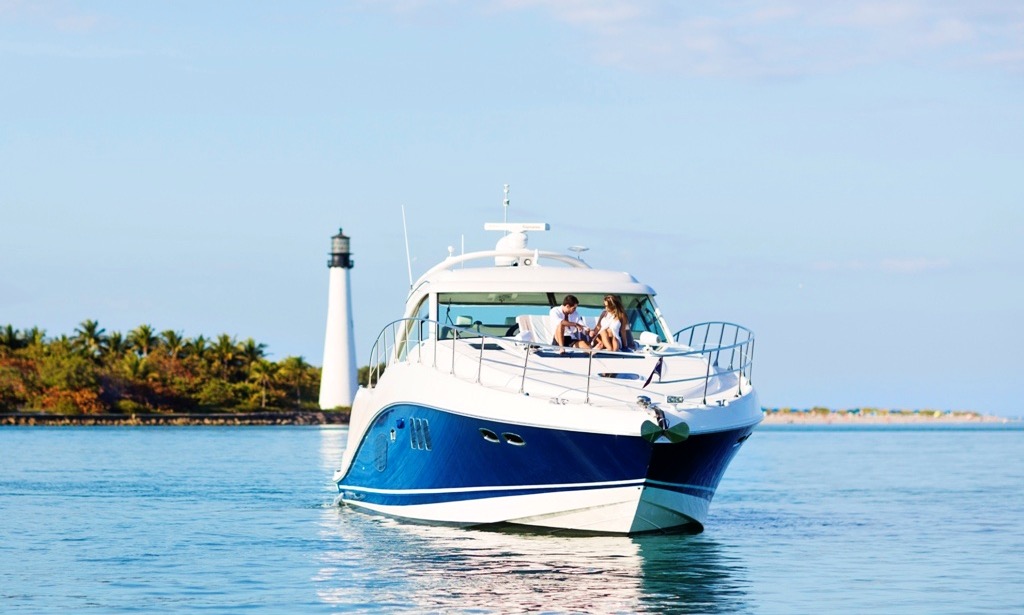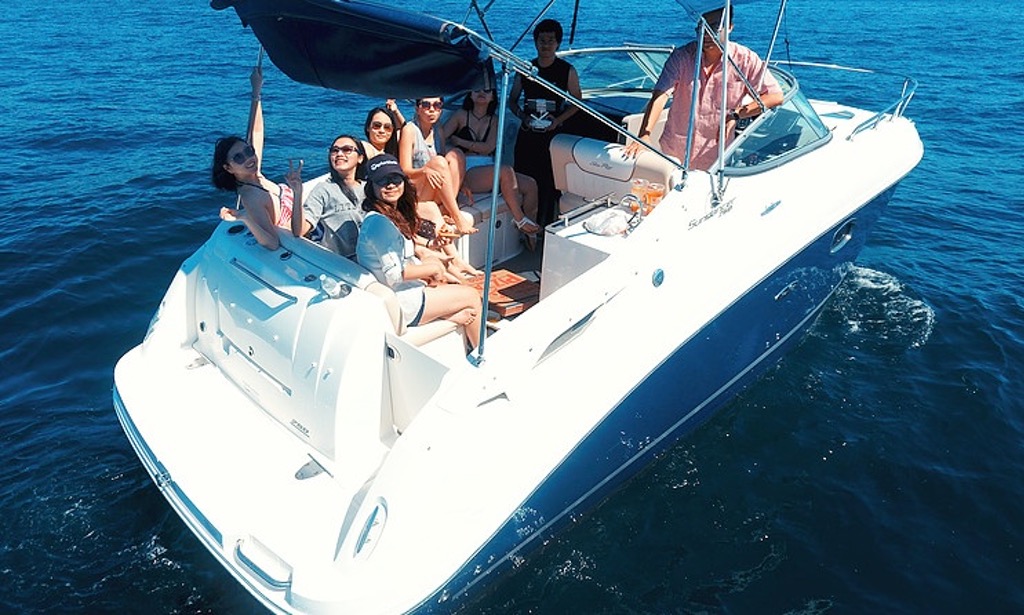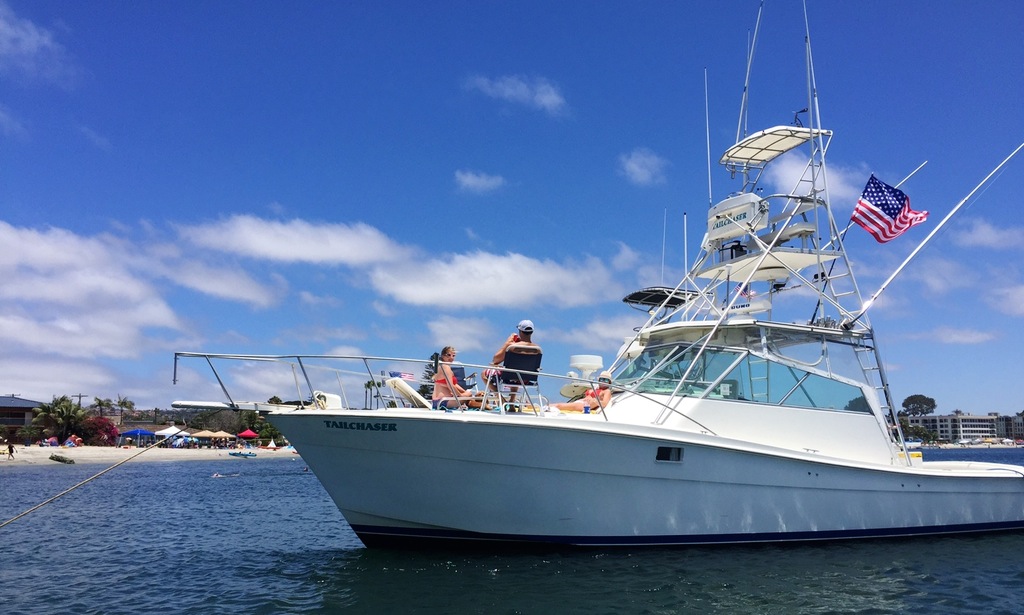
15 ways you can stay protected from the sun and boat more safely on your next boating trip
After a long winter, there’s nothing quite like sunshine, fresh air, and time on the water to boost your mood.
Before you head out for your next boating trip, take a look at our safe boating tips to make sure you’re protected from the sun and other elements.
1. Bring Layers
Even if it’s a cloudy day outside or you’re one of those people who doesn’t typically burn, the sun’s rays can be harmful.
Lightweight, UV-blocking clothes are easy to find at outdoor retailers and provide you with sun protection benefits in addition to comfort. You never know when the weather might take a turn or when the wind might pick up, so having extra layers are great for staying comfortable for a day out on the water. If you’re an avid angler, you may want to consider sun gloves to provide your hands protection while fishing.
2. Write up Your Float Plan
It’s always good to tell a trusted friend or a marina staff member your plans for boating.
Your “in case of emergency” plan should include your name, address, and phone number; the name and phone numbers of all your passengers; your boat registration information; your intended itinerary; and, when you plan to arrive back at the marina. Better safe than sorry, even if you’re only planning a day trip.
3. Pack a Broad-Spectrum Sunscreen
The American Academy of Dermatology recommends applying sunscreen at least 15 minutes before going outdoors. Double check that you bring a broad-spectrum sunscreen, which protects against both UVA and UVB rays.
Bringing your dog with you? Make sure that your sunscreen does not have zinc oxide, which is toxic to pets. We recommend investigating pet-friendly sunscreen options in advance.
4. Reapply Sunscreen Regularly
Best practices are to reapply sunscreen every two hours using roughly one (1) ounce all over the body, or the size of a shot glass. However, if you’re swimming or sweating, you should apply more regularly.
5. Leave the Alcohol at Home
Not only does alcohol consumption impair judgment and increase the likelihood of injury and accidents while boating, studies have also found evidence that alcohol consumption may make you more vulnerable to sunburn and sun damage.
It doesn’t matter if you’re not the person navigating or operating the boat – alcohol impairment is a serious issue that has implications for safety of all kinds, including sun safety.

6. Have Plenty of Hydration Options on Hand
Instead of packing your coolers with beer, try sparkling water, fresh-squeezed juices, or coconut water. You can also spruce up plain water by infusing it with berries, cucumbers, or citrus for a spa-like experience at minimal cost.
People often forget to hydrate properly while boating, and the last thing you want is to cut an excursion short due to heat exhaustion or heatstroke.
7. Strap your Lifejacket On
Make sure that there is a properly fitting lifejacket for every passenger, including babies, children, and pets. The majority of drowning victims are found not to be wearing lifejackets, and these flotation devices can be a useful aid, even for experienced swimmers.
8. Remember your Sunnies
Don’t strain your eyes – shield them with sunglasses. Sun exposure can cause serious sunburns on your eyes, damaging your corneas as well as the whites of your eyes. Sunglasses also protect the skin around your eyes from possible sun damage.
Wraparound sunglasses with dark lenses that offer 100% UVA/UVB protection are your best bet for maximum sun protection. If you’re an avid boater, you may want to consider investing in a pair of polarized sunglasses, which neutralize glare.
9. Pick Smarter Swimwear
If you plan to be lounging around onboard most of the day or looking for a cover-up to wear between swims, you might want to consider full-coverage swimwear like rash guards or swim shirts. Board shorts and swim dresses are also great ways to cover up with style.
10. Schedule a Free Vessel Safety Check
Did you know that the U.S. Coast Guard offers free boat checks to assess your safety equipment? Plan for a specialist to come out and look at your boat as part of regular maintenance, especially if you recently purchased a boat or if your boat has been in storage for a while.

11. Consider Fishing Before Sunrise or Setting Out on a Sunset Excursion
The sun is at its strongest points between 10 a.m. and 4 p.m. While you might miss out on the warmest and sunniest points of the day, we encourage boaters to try a fishing excursion around dawn or schedule a sunset sail with friends when the conditions are safer. Besides, fishing in the early hours or after dark typically yield better results, and setting sail as dusk approaches allows for beautiful photo opportunities.
12. Wear a Brimmed Hat
Protect your scalp, face, and ears with a hat! While most people envision someone wearing a baseball cap on a boat, the best kind of hat are brimmed hats that protect your ears and provide shade for your face. You can also consider a French Foreign Legion-style hat with the long cloth in the back to drape against your neck – perhaps a bit more safari flair than you’d normally wear, but excellent for the advanced boater who spends most of summer on the water.
13. Take a Class to Improve Your Open Water Skills
This might sound counter-intuitive to our recommendations about sunscreen, but a great way to cool off and experience the water is to get your feet wet! One thing that many boaters are lacking, though, is experience with open water. Many local recreation centers, outdoors and adventure retailers, and Meetup groups offer open water classes to help you get more comfortable with the water. Just make sure you remember to reapply sunscreen once you’re back on board!
14. Invest in a Sun Shade
Sun shades are canvas additions that can be installed on your boat to add shady spots for passengers to enjoy, and they’re also good at mitigating the wear and tear on your watercraft from regular sun exposure.
A good sun shade is an excellent investment if you’re looking to shield your passengers from the sun’s harmful rays and maintain your boat for longer.
15. Know the Warning Signs for Heat Exhaustion and Heatstroke
The first signs of heat exhaustion include thirstiness, fainting, nausea, irritability, and headache, and the symptoms for heatstroke are even more severe. These heat conditions are easily preventable, so it’s good to know how to treat these symptomatically until you’re back on dry land.
Enjoy your time out on the water!
Latest posts by Sun Safe Boating News (see all)
- Sun Safety Educational Materials for Kids - July 22, 2018
- Safe from the Sun Walk and 5K Run Event 2018 - April 30, 2018
- Here Comes the Sun – Safety Tips for Boaters - March 27, 2018
- Get Ready for a Sun Safe Season - March 16, 2018
- Are You Putting Safe Sunscreen on Your Skin? - February 21, 2018
